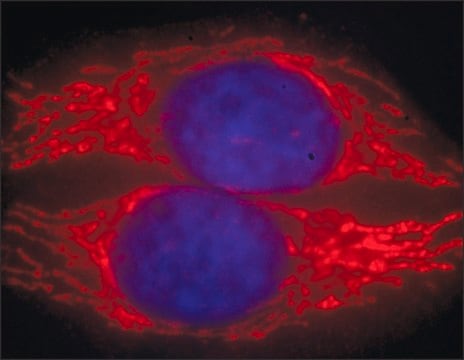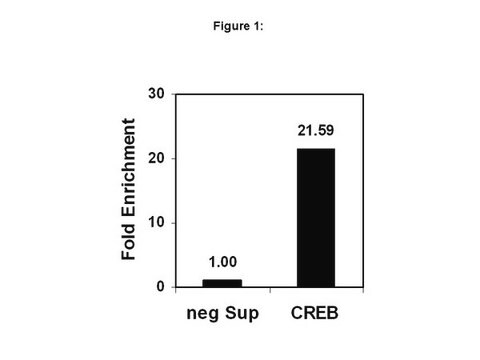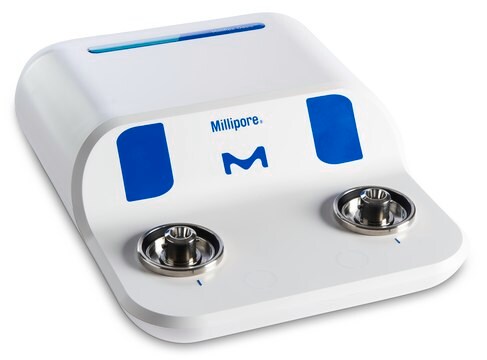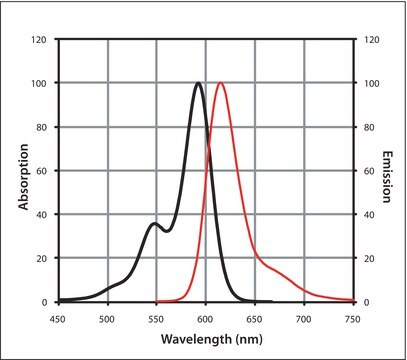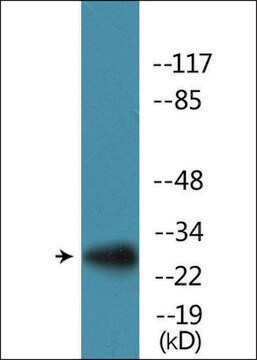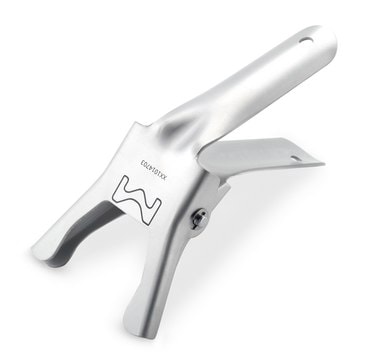17-10131
ChIPAb+ Phospho-CREB (Ser133) - ChIP Validated Antibody and Primer Set
from rabbit
Sinonimo/i:
active transcription factor CREB, cAMP responsive element binding protein 1, cAMP-response element-binding protein-1, transactivator protein
About This Item
Prodotti consigliati
Origine biologica
rabbit
Livello qualitativo
Clone
polyclonal
Reattività contro le specie
rat, mouse, human, hamster
Produttore/marchio commerciale
ChIPAb+
Upstate®
tecniche
ChIP: suitable
electrophoretic mobility shift assay: suitable
immunohistochemistry: suitable
immunoprecipitation (IP): suitable
western blot: suitable
Isotipo
IgG
N° accesso NCBI
N° accesso UniProt
Condizioni di spedizione
dry ice
Informazioni sul gene
human ... CREB1(1385)
Categorie correlate
Descrizione generale
The ChIPAb+ Phospho-CREB (Ser133) set includes the Phospho-CREB (Ser133) antibody, a negative control normal rabbit IgG, and qPCR primers which amplify a 64 bp region of human cFos CRE. The Phospho-CREB (Ser133) and negative controls are supplied in a scalable "per ChIP" reaction size and can be used to functionally validate the precipitation of Phospho-CREB (Ser133)-associated chromatin.
Specificità
Immunogeno
Applicazioni
Representative lot data.
Sonicated chromatin prepared from 293T cells (5 X 10E6 cell equivalents per IP) were subjected to chromatin immunoprecipitation using either 4 µg of Normal Rabbit IgG, (Part No. P64B), or 4 µg of Anti-Phospho-CREB (Ser133) antibody (Part No. CS204400) and the Magna ChIP® A Kit (Cat. # 17-610).
Successful immunoprecipitation of Phospho-CREB (Ser133) antibody associated DNA fragments was verified by qPCR using ChIP Primers cFos CRE (Part No. CS203203) as a positive locus, and cFos downstream 4Kb as a negative locus (Figure 2). Data is presented as percent input of each IP sample relative to input chromatin for each amplicon and ChIP sample as indicated.
Please refer to the EZ-Magna ChIP A (Cat. # 17-408) or EZ-ChIP (Cat. # 17-371) protocol for experimental details.
Western Blot Analysis:
Representative lot data.
Untreated (lane 1) and Forskolin-treated (Lane 2) NIH/3T3 lysates were resolved by SDS-PAGE, transferred to PVDF, and probed with anti-phospho-CREB (Ser133) (1:1,000 dilution).
Proteins were visualized using a donkey anti-rabbit secondary antibody conjugated to HRP and a chemiluminescence detection system.
Arrow indicates phosphorylated CREB (Figure 3).
Immunoprecipitation:
10 µL from a representative lot of this antibody was shown to immunoprecipitate phosphorylated CREB from 500 µg of cells treated with 50 mM forskolin.
Immunohistochemistry: A 1:1000 dilution of a representative lot detected phosphorylated CREB in formalin-fixed paraffin-embedded normal and ischemic rat brain sections.
Electrophoretic Mobility Shift:
A representative lot of this antibody has been shown to gel shift by an independent laboratory.
Signaling
Epigenetics & Nuclear Function
Transcription Factors
Confezionamento
Qualità
Sonicated chromatin prepared from 293T cells (5 X 10E6 cell equivalents per IP) was subjected to chromatin immunoprecipitation using either 4 μg of a Normal Rabbit IgG , or 4 μg of Anti-Phospho-CREB antibody and the Magna ChIP® A Kit (Cat. # 17-610). Successful immunoprecipitation of Phospho-CREB (Ser133) associated DNA fragments was verified by qPCR using ChIP Primers cFos CRE (Figure 1).
Please refer to the EZ-Magna ChIP A (Cat. # 17-408) or EZ-ChIP (Cat. # 17-371) protocol for experimental details.
Descrizione del bersaglio
Stato fisico
Normal Rabbit IgG, Part No. PP64B. One vial containing 125 µg Rabbit IgG in 125 µL storage buffer containing 0.05% sodium azide.
Store at -20°C.
ChIP Primers cFos CRE, Part No. CS203203. One vial containing 75 μL of 5 μM of each primer specific for the cFos CRE. Store at -20°C.
FOR: GGC CCA CGA GAC CTC TGA GAC A
REV: GCC TTG GCG CGT GTC CTA ATC T
Stoccaggio e stabilità
Risultati analitici
Includes negative control normal rabbit IgG and primers specific for human cFOS CRE.
Altre note
Note legali
Esclusione di responsabilità
Codice della classe di stoccaggio
12 - Non Combustible Liquids
Punto d’infiammabilità (°F)
Not applicable
Punto d’infiammabilità (°C)
Not applicable
Certificati d'analisi (COA)
Cerca il Certificati d'analisi (COA) digitando il numero di lotto/batch corrispondente. I numeri di lotto o di batch sono stampati sull'etichetta dei prodotti dopo la parola ‘Lotto’ o ‘Batch’.
Possiedi già questo prodotto?
I documenti relativi ai prodotti acquistati recentemente sono disponibili nell’Archivio dei documenti.
Il team dei nostri ricercatori vanta grande esperienza in tutte le aree della ricerca quali Life Science, scienza dei materiali, sintesi chimica, cromatografia, discipline analitiche, ecc..
Contatta l'Assistenza Tecnica.
